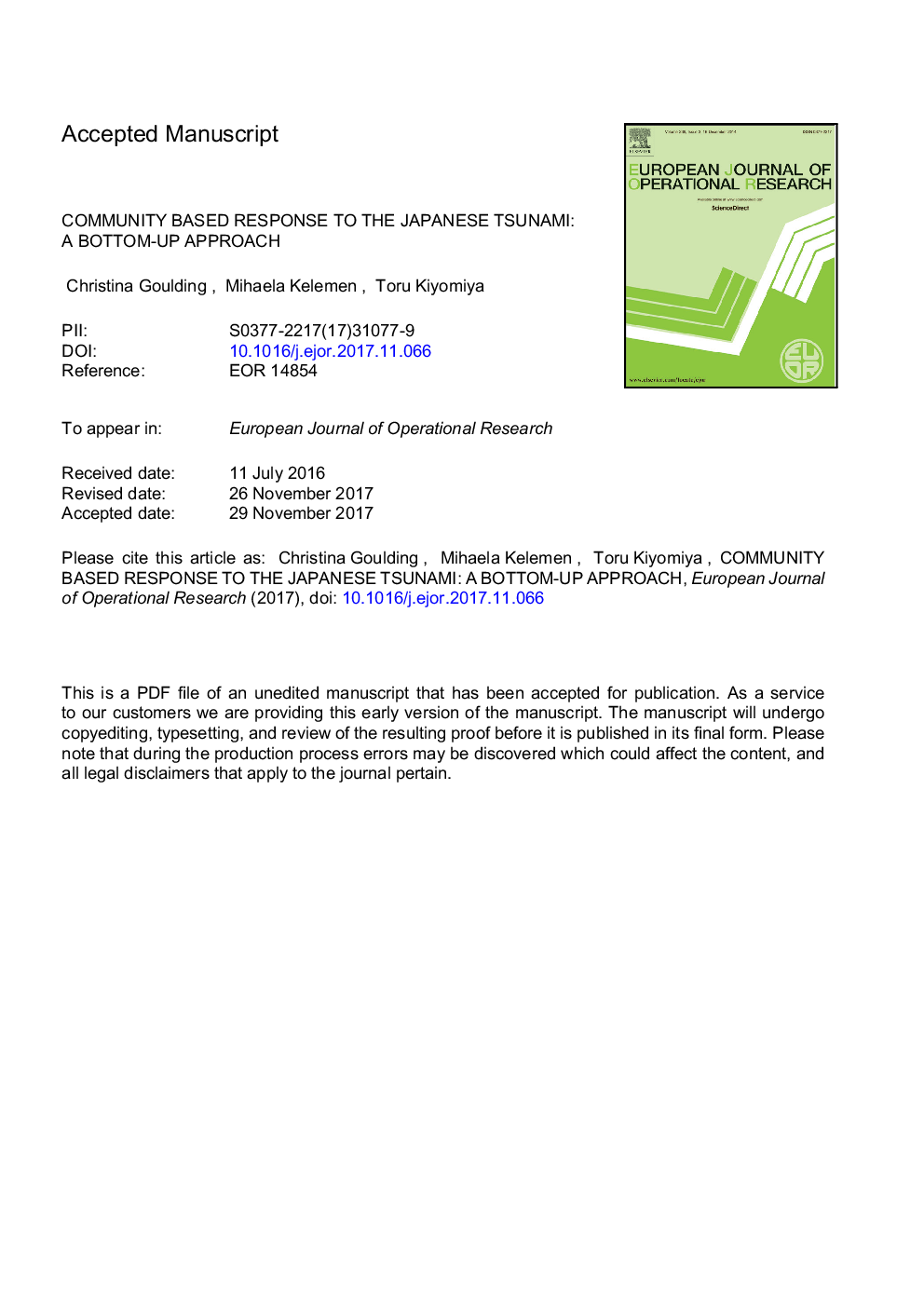| Article ID | Journal | Published Year | Pages | File Type |
|---|---|---|---|---|
| 6894787 | European Journal of Operational Research | 2018 | 34 Pages |
Abstract
The 2011 Tohuku earthquake and tsunami are said to be the most powerful ever to hit Japan. The result was tremendous loss of life, homes and livelihoods; the destruction of infrastructures; and the disruption of basic facilities. The aftermath of this disaster is the context of our research and we aim to show how a CBOR intervention approach can complement and be integrated into a larger social science project to offer a more praxis grounded understanding of the challenges faced. Our focus is on the interventions employed at the community level to reconstruct and rebuild a marginalized and devastated community-Minami Sanriku. We employ an arts-based methodology, supported by traditional qualitative methods, both as a means of data gathering and as a CBOR intervention in its own right, in order to understand and contribute to the socio-cultural dynamics of resilience and resilience building. Our pluralist and participatory methodology places community and concerned citizens at the heart of the rebuilding process. We analyze how a community in crisis draws upon social networks, cultural practices and collective interventions to rebuild from within. We frame our findings in terms of culture, community and resilience, and examine three interventions which have the ultimate aim of 'building back better'.
Related Topics
Physical Sciences and Engineering
Computer Science
Computer Science (General)
Authors
Christina Goulding, Mihaela Kelemen, Toru Kiyomiya,
